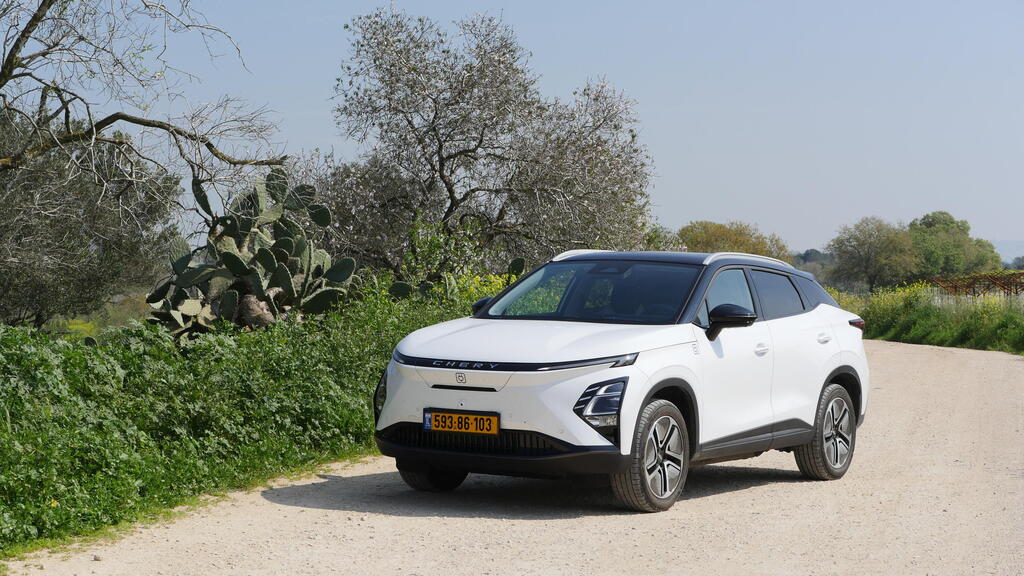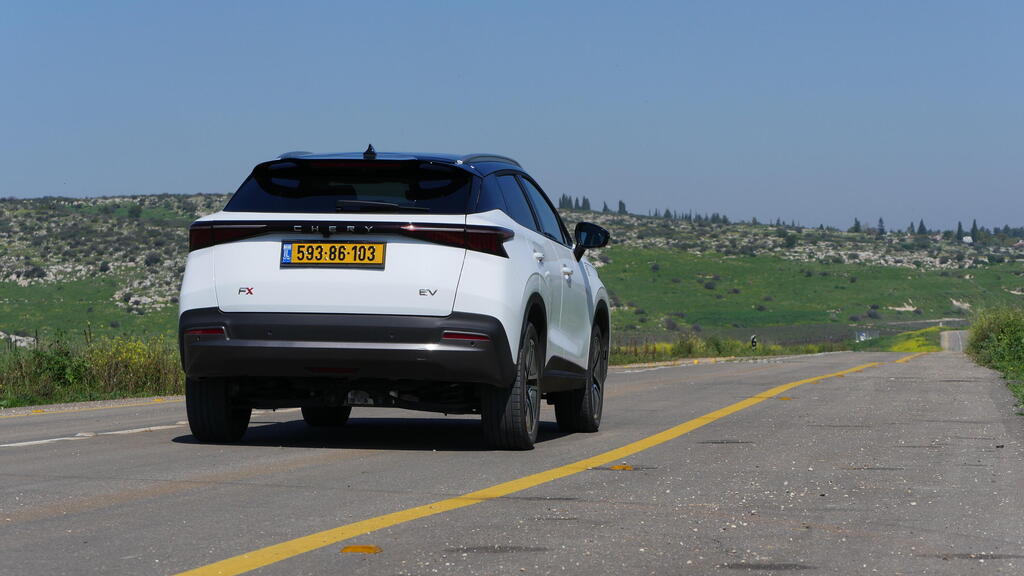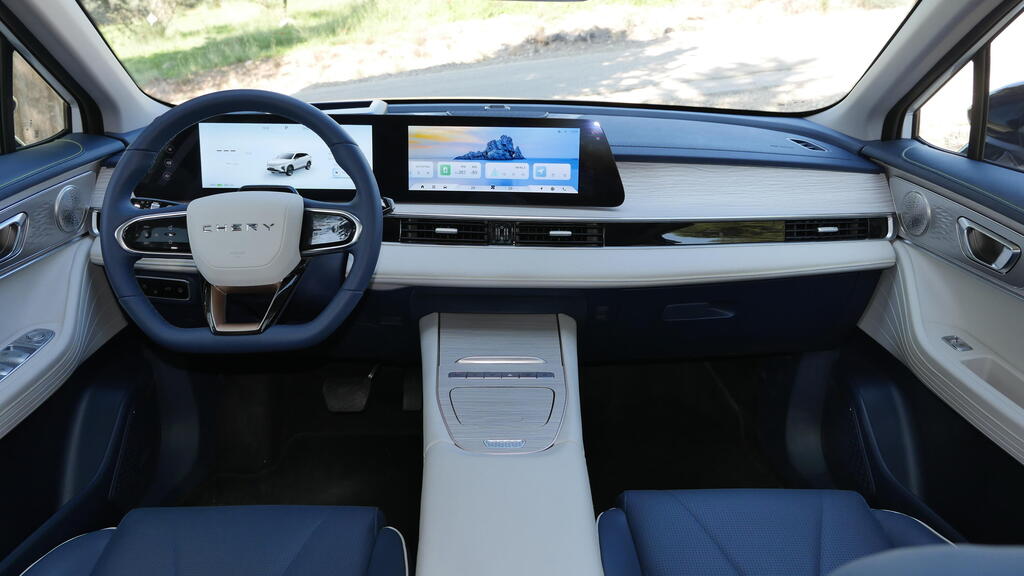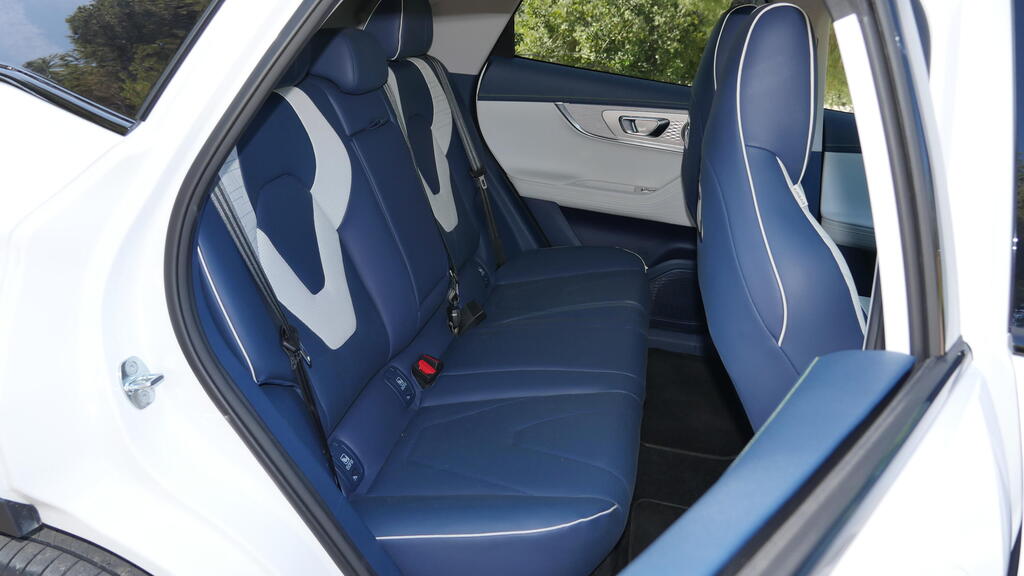Getting your Trinity Audio player ready...
Chery has seen immediate and substantial success in the local market since its arrival in Israel a year and a half ago, securing seventh place in last year's sales charts—an exceptional achievement for an unfamiliar Chinese brand primarily selling gasoline models. However, things have changed with the introduction of an electric version of the familiar FX model.
While not purpose-built as an electric vehicle, the FX electric version is a noteworthy addition. Priced only 7,000 shekels ($1900) more than its gasoline counterpart, it promises significant savings in fuel and maintenance costs. It boasts a decent range, robust safety features, and an impressive equipment list, positioning it well for success. However, its real-world performance tells a different story.
Summary
The electric FX makes a strong impression in the showroom. Its higher price compared to the gasoline version is easily justified by substantial savings on fuel and maintenance. The model promises a decent driving range, adequate safety features, and rich equipment in the tested vehicle. However, it falls short in several areas.
Direct competitors: MG ZS EV, Geely Geometry C, and BYD Atto 3
Test vehicle price: 167,000 shekels ($45,000)
Pros: Equipment
Average: Driving range, performance
Needs improvement: Ride comfort, road handling, ergonomics, regenerative braking
Rating: 6
The FX electric’s driving range is lower than advertised and less than its direct competitors. Fast charging is not very impressive, and the ride quality is poor both in the city and on highways, making long drives tiring. Although it’s a comfortable vehicle to sit in, its driving performance doesn't match that of its gasoline counterpart.
Performance and design
The electric motor delivers 204 horsepower, like many of its competitors, and offers significantly better power availability due to the technology. Acceleration to 60 mph is quicker by 1.5 seconds (7.6 seconds), but strong acceleration leads to wheel spin issues due to poor tire choice and inadequate suspension calibration for the added weight and power.
The regenerative braking system has three levels of intensity but is controlled via the touch screen, a setup criticized for being inconvenient while driving. The strongest setting does not allow for single-pedal driving, common in modern EVs.
The 61.1 kWh battery promises a range of 430 km, which is decent but not extraordinary. In practice, we achieved a modest 350 km under non-challenging driving conditions, based on a manual calculation of 17.5 kWh per 100 km. Fast charging is relatively slow (80 kW), taking 40 minutes to go from 10% to 80%.
Comfort and ergonomics
The FX electric is heavier by 360 kg than the gasoline version, and this is noticeable. The suspension doesn’t seem to have been adequately adjusted for the extra weight, resulting in a bumpy city ride and an unsettling lack of damping on the highway. Road and wind noise are also significant at legal cruising speeds. Accordingly, its dynamic performance needs improvement, with early loss of grip and unresponsive steering and brakes.
Interior and features
The design changes are minimal, with a grille-less front and different wheels, while the interior features a larger dashboard and touchscreen (12.3 inches versus 10.5 inches). However, operating the systems is cumbersome, requiring navigation through tedious menus, and strangely, there is no dedicated volume control switch.
The drive mode selector is a lever on the right side of the steering wheel, allowing for more storage space between the seats. The color combination of the faux leather upholstery was less appealing.
The living space remains the same as the gasoline version, thanks to the efficient integration of the batteries in the floor, though the rear seat space is more cramped compared to the Geometry C and Atto 3 due to a shorter wheelbase (263 cm). The seating position is high, offering good forward and side visibility, but the limited steering wheel adjustment range makes finding a comfortable driving position difficult. The trunk capacity is similar to the gasoline version (380 liters), and it includes a spare tire, a rarity in electric vehicles.
Equipment and safety
The base model's equipment list is modest. However, the more expensive test vehicle included features like 360-degree cameras, electric seat adjustment, heating and ventilation for the front seats, a head-up display, a sunroof, and a power tailgate.
The safety package includes autonomous braking, lane-keeping assist, adaptive cruise control, and blind-spot warning. However, these systems are not the best available and suffer from an unexplained and unsettling number of false alarms and subpar performance.
Engine: Electric
Battery capacity: 61.1 kWh
Power/torque: 204 hp / 35.3 kgm
Drive: Front-wheel
Length: 442 cm
Width: 183 cm
Height: 159 cm
Wheelbase: 263 cm
Weight: 1,785 kg
Trunk Volume: 380 liters
0-60 mph: 7.6 seconds
Top speed: 107 mph
Airbags: 6
Safety rating (Euro NCAP): Five stars
Test vehicle price (base): 167,000 shekels or $45,000 (157,000 shekels or $42,400)
Conclusion
While the electric FX has potential, its current iteration struggles to compete effectively with its rivals. Future models must significantly improve to stand out in the market.






